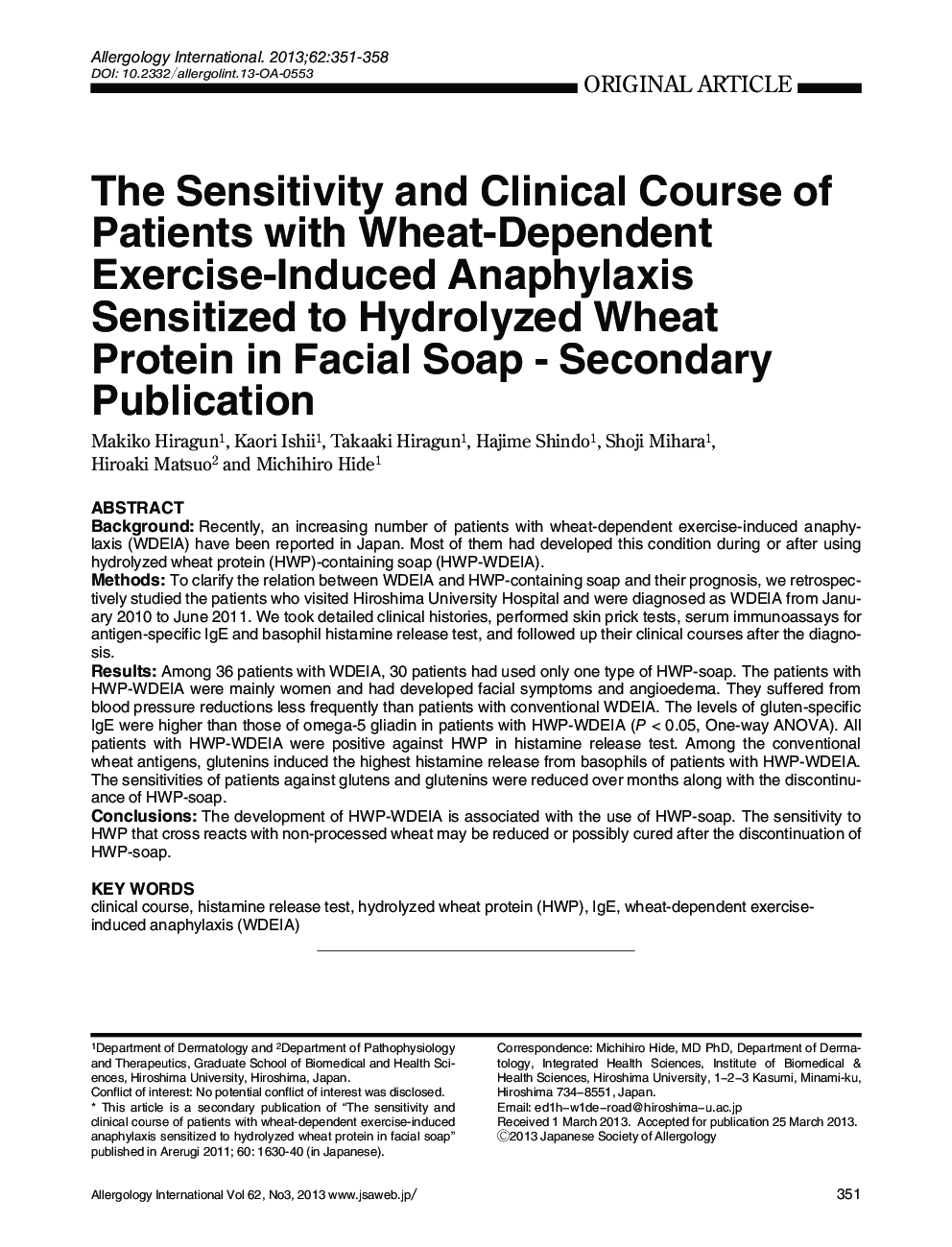| Article ID | Journal | Published Year | Pages | File Type |
|---|---|---|---|---|
| 3340823 | Allergology International | 2013 | 8 Pages |
ABSTRACTBackgroundRecently, an increasing number of patients with wheat-dependent exercise-induced anaphylaxis (WDEIA) have been reported in Japan. Most of them had developed this condition during or after using hydrolyzed wheat protein (HWP)-containing soap (HWP-WDEIA).MethodsTo clarify the relation between WDEIA and HWP-containing soap and their prognosis, we retrospectively studied the patients who visited Hiroshima University Hospital and were diagnosed as WDEIA from January 2010 to June 2011. We took detailed clinical histories, performed skin prick tests, serum immunoassays for antigen-specific IgE and basophil histamine release test, and followed up their clinical courses after the diagnosis.ResultsAmong 36 patients with WDEIA, 30 patients had used only one type of HWP-soap. The patients with HWP-WDEIA were mainly women and had developed facial symptoms and angioedema. They suffered from blood pressure reductions less frequently than patients with conventional WDEIA. The levels of gluten-specific IgE were higher than those of omega-5 gliadin in patients with HWP-WDEIA (P < 0.05, One-way ANOVA). All patients with HWP-WDEIA were positive against HWP in histamine release test. Among the conventional wheat antigens, glutenins induced the highest histamine release from basophils of patients with HWP-WDEIA. The sensitivities of patients against glutens and glutenins were reduced over months along with the discontinuance of HWP-soap.ConclusionsThe development of HWP-WDEIA is associated with the use of HWP-soap. The sensitivity to HWP that cross reacts with non-processed wheat may be reduced or possibly cured after the discontinuation of HWP-soap.
